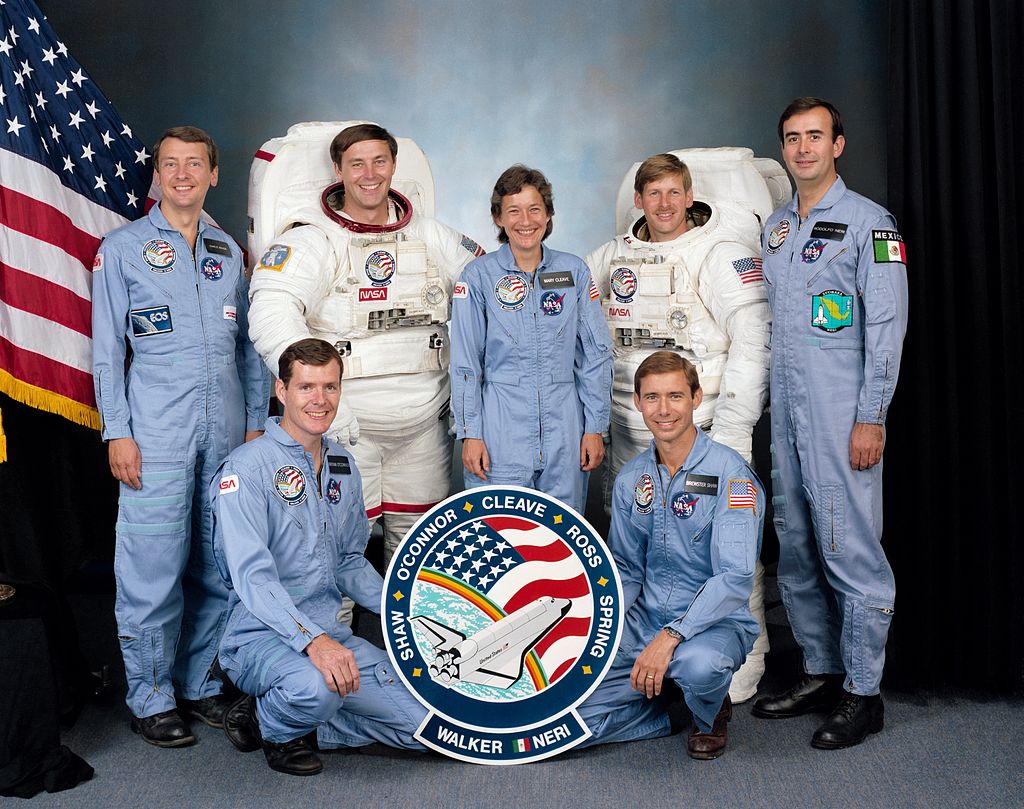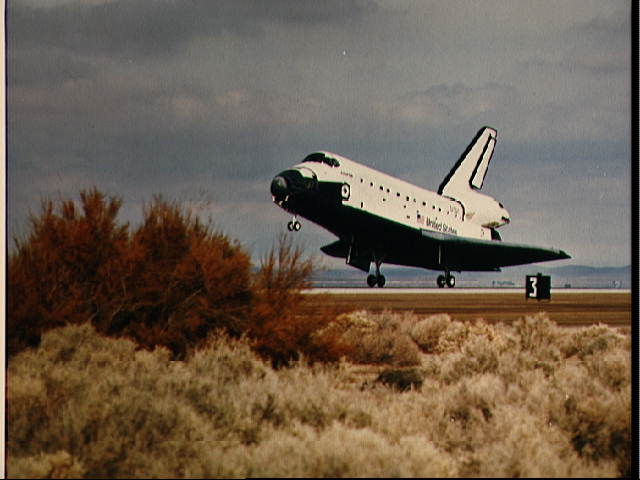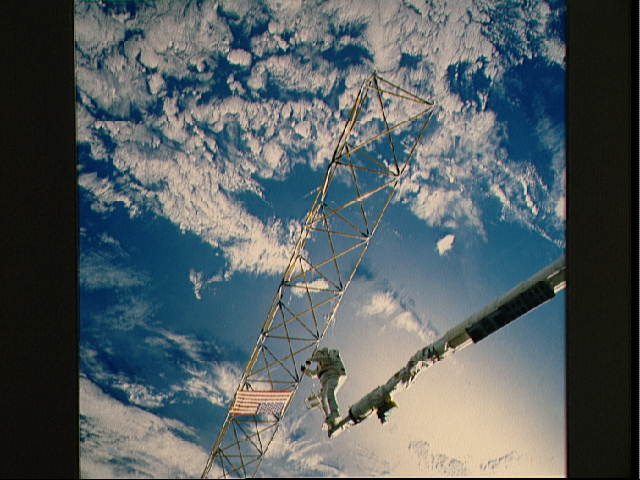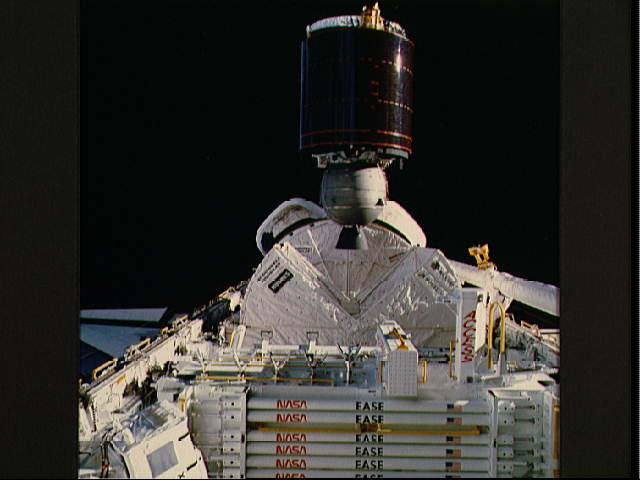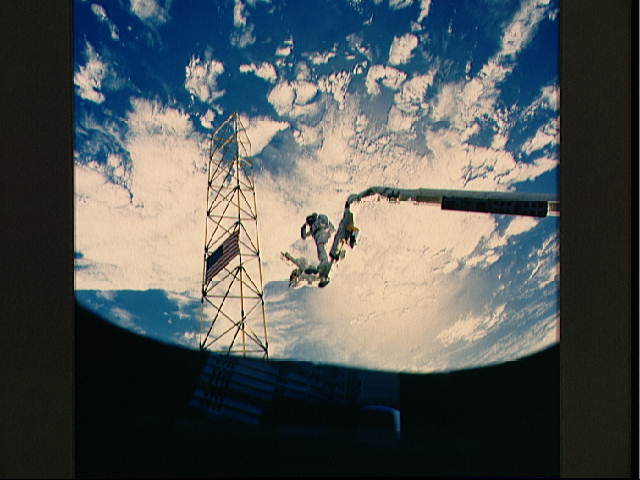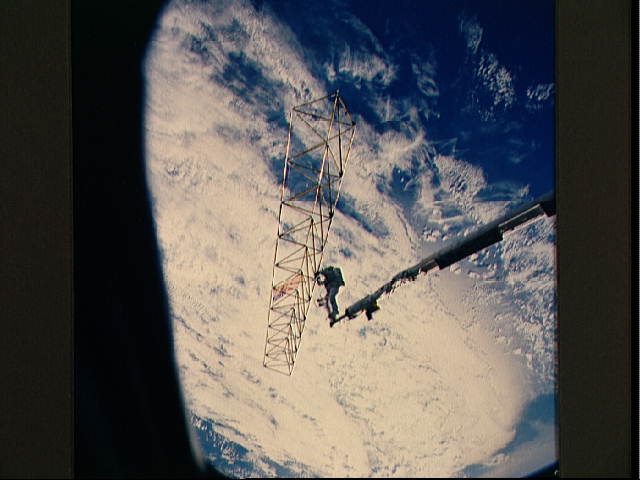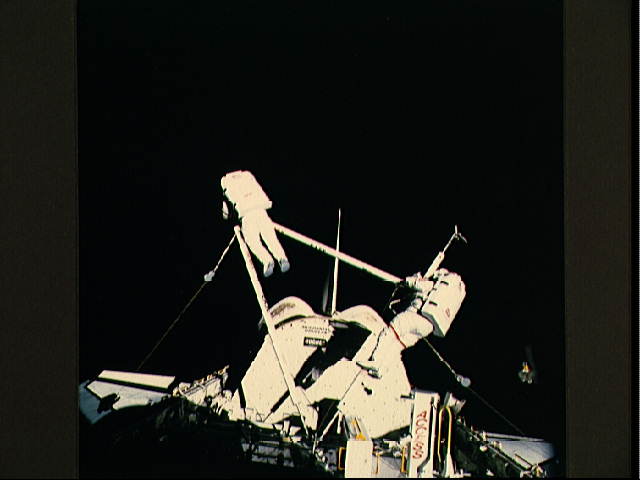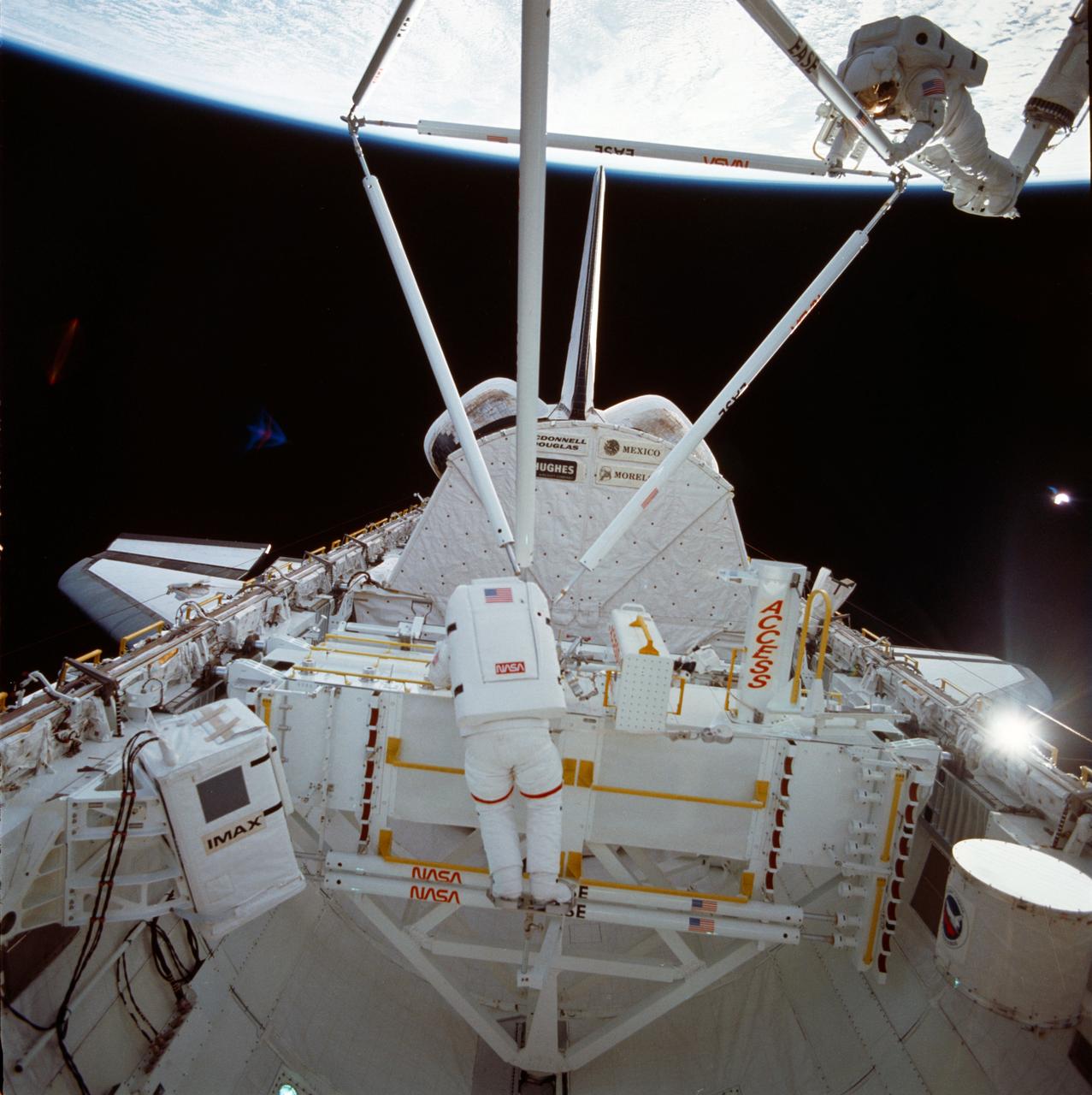STS-61B Fact Sheet
By Cliff Lethbridge
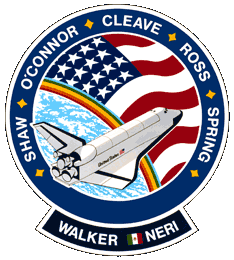
STS-61B — Atlantis
23rd Space Shuttle Mission
2nd Flight of Atlantis
Crew:
Brewster H. Shaw, Jr., Commander
Bryan D. O’Connor, Pilot
Mary L. Cleave, Mission Specialist
Sherwood C. Spring, Mission Specialist
Jerry L. Ross, Mission Specialist
Rodolpho Neri Vela, Payload Specialist
Charles D. Walker, Payload Specialist
Orbiter Preparations:
Tow to Orbiter Processing Facility – October 12, 1985
Rollover to Vehicle Assembly Building – November 7, 1985
Rollout to Launch Pad 39A – November 12, 1985
Launch:
November 26, 1985 – 7:29:00 p.m. EST. Launch occurred as scheduled with no delays.
Landing:
December 3, 1985 – 1:33:49 p.m. PST at Runway 22, Edwards Air Force Base, California. Rollout distance was 10,759 feet. Rollout time was 78 seconds. Mission duration was 6 days, 21 hours, 4 minutes, 49 seconds. Landing occurred during the 109th orbit.
Mission Summary:
Three communications satellites were deployed. These included MORELOS-B for Mexico, AUSSAT-2 for Australia and SATCOM-KU-2 for RCA Americom. MORELOS-B and AUSSAT-2 were attached to PAM-D solid rocket motors. SATCOM-KU-2 was attached to a PAM-D2 solid rocket motor, designed for heavier payloads.
Two spacewalks were conducted by astronauts Ross and Spring to test the assembly of structures in space, a preliminary test for space station assembly methods. These included Experimental Assembly of Structures in Extravehicular Activity (EASE) and Assembly Concept for Construction of Erectable Space Structure (ACCESS).
The first spacewalk was conducted on November 29, 1985 and lasted 5 hours, 32 minutes. The second spacewalk was conducted on December 1, 1985 and lasted 6 hours, 41 minutes. Both spacewalks were deemed highly successful.
Other payloads included Continuous Flow Electrophoresis System (CFES), Diffusive Mixing of Organic Solutions (DMOS), Morelos Payload Specialist Experiments (MPSE), Orbiter Experiments (OEX), one GAS experiment and the IMAX Cargo Bay Camera (ICBC).
SELECTED NASA PHOTOS FROM STS-61B
